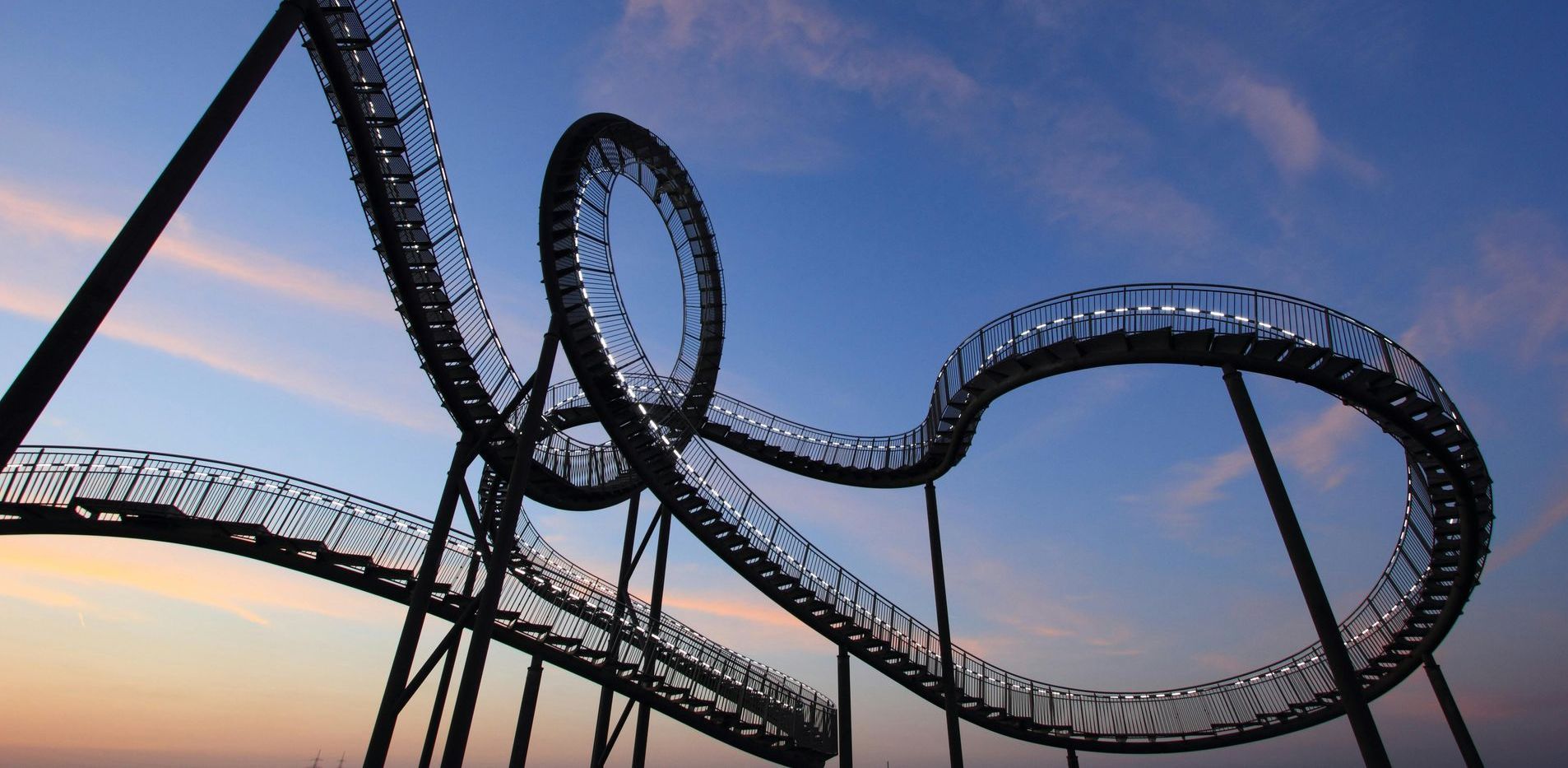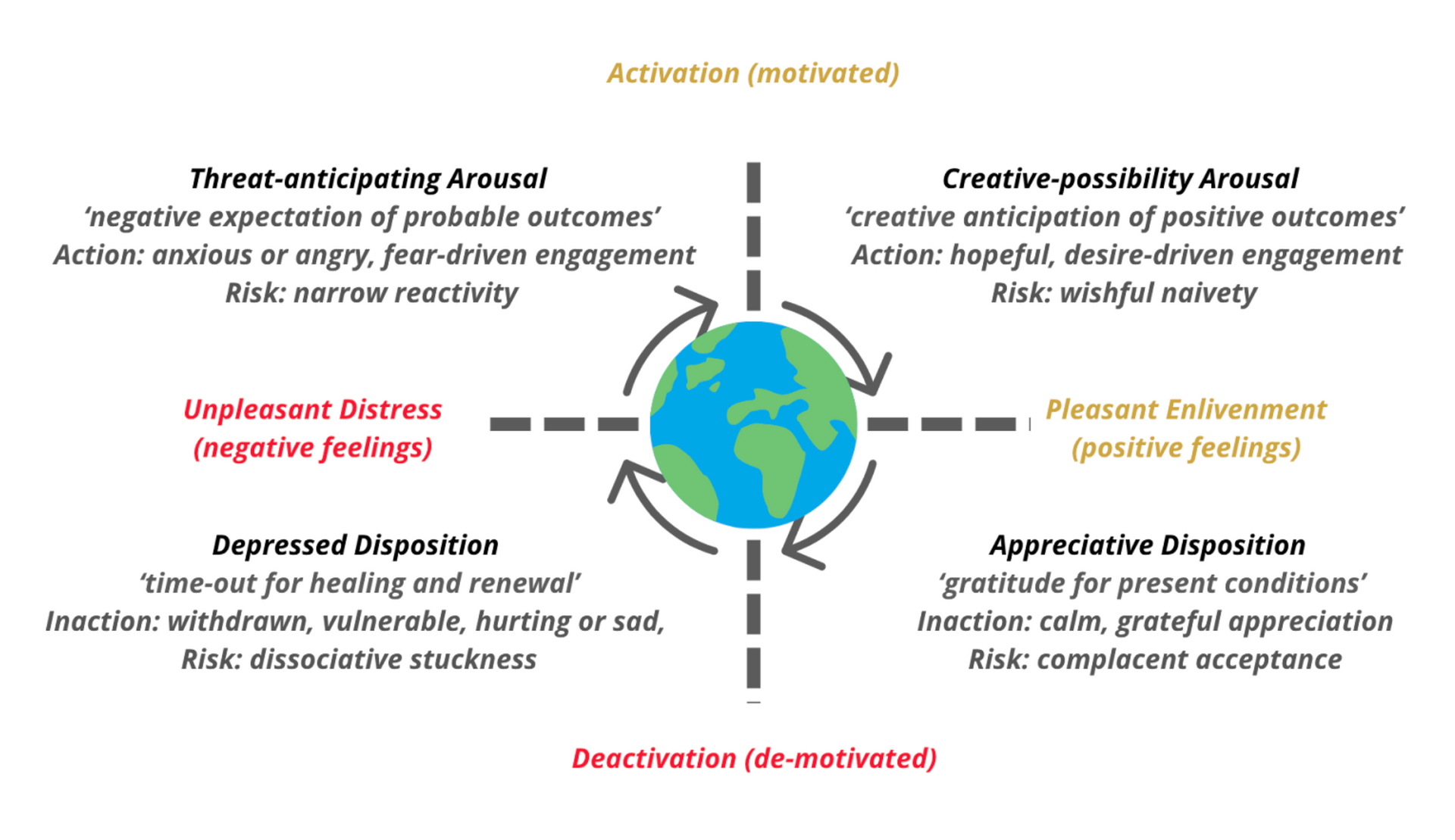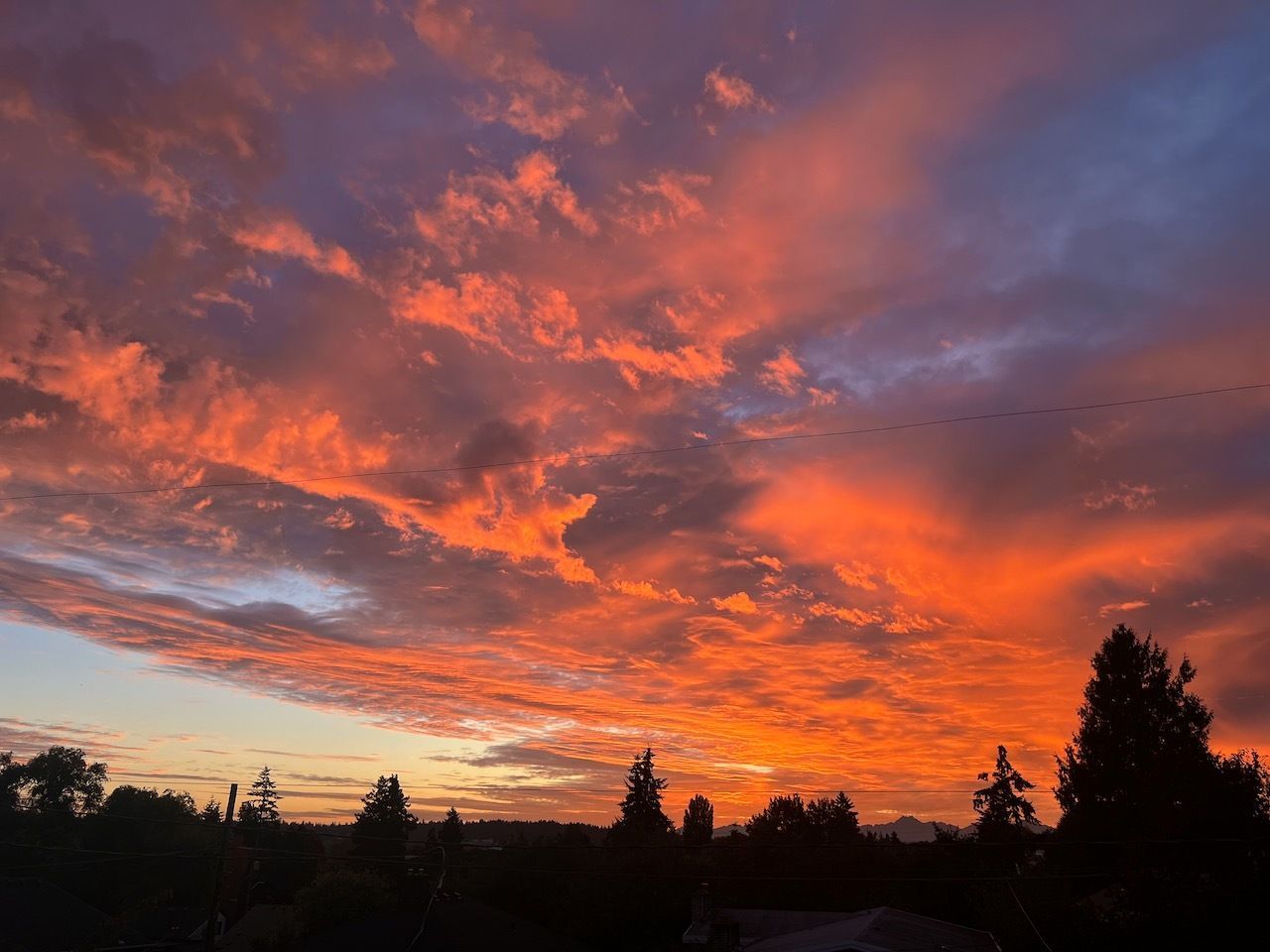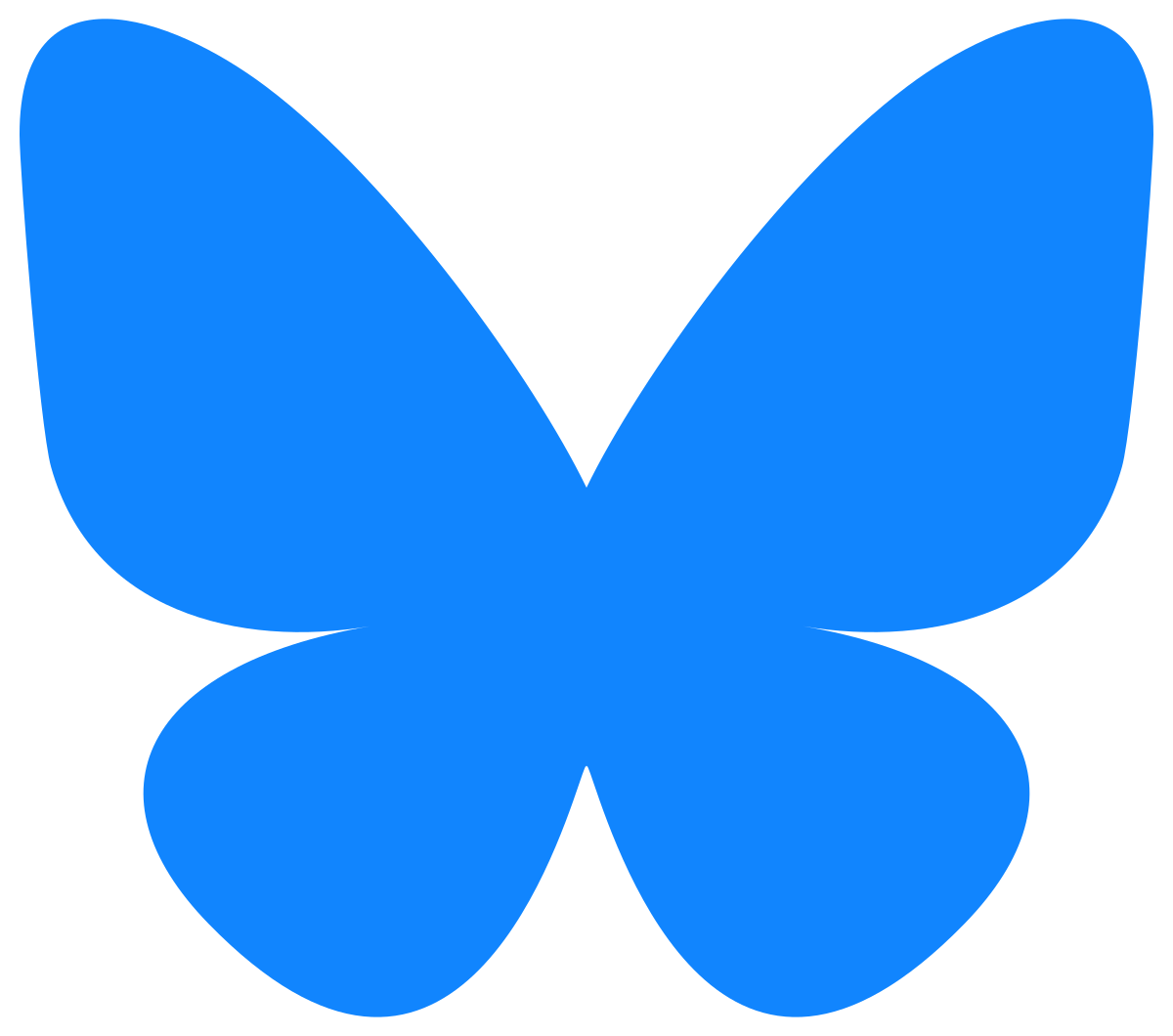The mood shifts and cycles of collapse awareness.

Collapse awareness is a roller coaster of emotions and mood states - but at the same time, we still have to function and keep going - right? After all, who has the luxury to stand still or fall apart? So, we often end up having to suppress our moods in order to get by.
As a coach and Collapse Club convener, I’ve noticed the same mood patterns over and over - in myself, and in those I accompany.
When I first became collapse aware, I spent six months in overwhelming anxiety and deep depression. On my worst days, my spine felt like it was screaming, and simply functioning was a struggle. After the spine-screaming phase, I spent a few years mostly in despondency and depression. There was nothing to be done that I could see or connect with, I was just going through the motions of living because nothing seemed worthwhile. I remember thinking - ‘so is this it, is the rest of my life just going to be waiting in despair for doom to arrive?’ I wasn’t ‘depressed’ in the standard sense, but I was depressed nonetheless.
Eventually I found my way to the Deep Adaptation community and Collapse Club, and found things worth doing together with others - not to ‘solve’ the crisis - but to make a meaningful difference in some significant way, and it never ceases to amaze me how touched, amazed and enlivened by my fellow collapse-niks I am. And that truly matters - untilI fall back into overwhelm, despair and anxious inaction for a while.
Being somewhat obsessed by patterns, I like to create infographics which represent the patterns I notice, that I think may be useful to others.This graphic represents the ‘mood cycle’ which I have noticed in myself and others.

The horizontal axis represents the full range of negative to positive emotions, from despair to exhilaration. The vertical axis represents how motivated and engaged we might be, from paralysed to frenetic. Together, the two axes form four mood quadrants - the roller coaster or mood-cycle you may recognize in yourself and others.
These days I cycle through these moods much faster. I know where I am in the cycle, what to attend to and expect, and how to shift my mood more quickly when I need to. I’m not nearly as lost or stuck as I was, and I can recognise these moods in my fellow travellers. Collapse Club helps enormously. You’ve probably noticed and resonated with each of these moods in others, as we share our feelings and perspectives, even when your present mood is different to someone else's, or to how you were last week.The questions help us recognise and cycle.
The changes that helped me most from recognising this cycle include:
- Accepting that any time ‘I am where I am' in the cycle.
- Giving myself full permission to fully feel wherever I’m at.
- Remembering that each mood phase connects me with something real (that may not be apparent in a different mood state).
- Realizing that fully experiencing a mood speeds up the shift to the next one.
- Understanding that I notice really different things according to whichever mood I’m in, and that they are all true.
This agility lets me return to the realm of ‘enlivened engagement’ more often, and for longer, which is where I am most able to make a difference to what matters most. It’s why we end with glimmers, practising an intentional shift in both noticing and mood.
Now that I am more agile at handling these mood cycles and swings, sometimes I can even ‘engineer’ a shift for myself, but nothing works better than circling with others. At the same time, I know that each mood has a function, putting me in touch with something real that needs attending to - the wisdom is recognizing that each mood serves a purpose if we allow it to. I’m always collapse aware - that’s more steady than ever - but what I notice, what captures my attention and what seems possible or worthwhile changes, depending on where I am in the cycle. Each state has a gift (and a risk) pointing me toward something that I might not pay attention to otherwise.
Mood greatly affects our ‘salience landscape’, what we notice and perceive in the environment around us, what stands out in the ‘field of awareness’ as significant or worthy of attention, what seems threatening, hopeful, necessary, likely, possible or worthwhile, as well as how much motivation is available.
Collapse awareness is an assault on the psyche - we can easily become captured and overwhelmed by the ‘threat landscape’, which is what I call ‘bigger-than-self distress’. The threat landscape really does exist, and needs attention, but perhaps we don’t need to be captured by it all the time (I wish I had realised that sooner). The antidote to bigger-than-self distress is ‘more-than-me enlivenment’ - when we find the motivation to engage with something that’s possible and worth doing, that has a positive effect on behalf of what we love. The ‘positive possibility landscape’ also exists, if we have eyes to see it.
When we are deeply distressed, it can be very hard to see anything that’s good or seems worth doing, let alone finding any ‘oomph’ to do it. When we are greatly enlivened it's hard to even remember what we were worried about, because there’s beauty, goodness and possibility right here amongst us, and more on the way tomorrow, because of what we achieved today. That hopefulness can be naive, or it can be wise.
It turns out that ‘business-as-usual’ only allows a very narrow range of acceptable feelings, emotions and levels of motivation - or ‘states of arousal’. We are supposed to feel the same, see the same, and act the same all year round. Bigger-than-self distress and more-than-me enlivenment break the rules of acceptable feelings and behaviour. Despair, rage, hope and appreciation, they all have a vital role to play in coming alive to what’s real.
These stories contain the opinions of the writers and do not necessarily reflect the opinion of Collapse Club members or conveners.
This work is licensed under Attribution-NonCommercial-NoDerivatives 4.0 International
Discuss this post!
If you would like to comment on or discuss this post with others, please join the Collapse Club Facebook Group.
Visit our Facebook Group for interesting links and light-hearted discussion. Check out the Glimmer Chat!





